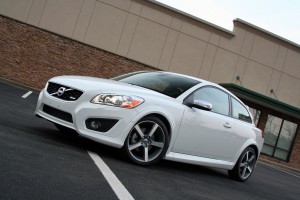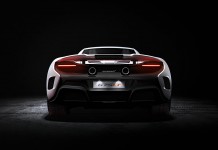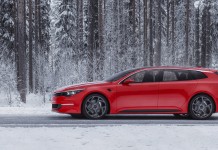AutoTalk.com was given a chance to speak with Nissan/Infiniti EVP Brain Palmer during the 2012 NYIAS. Here is a transcription of our meeting. Andy is a quick witted and genial Brit with a sharp mind and pleasant disposition.
Andy Palmer is Executive Vice President and Executive Committee member at Nissan Motor Company Limited, with specific responsibilities for Nissan’s Corporate Planning, Product Planning and Program Management, Global Marketing Communications, Market Intelligence, Global IS/IT and Global Infiniti Business Unit.
For more information about Andy Palmer can be found here.
AutoTalk: Good afternoon, Sir. Thanks for taking the time to meet with me.
Andy: Please, don’t call me sir. I haven’t yet been knighted, and it is my pleasure.
AutoTalk: Let us get started then.
Andy: Let’s.
AutoTalk: The new JX is a very important vehicle for Infiniti. How did this vehicle come to be, and what market is being targeted?

AutoTalk: In reference to Infiniti having younger buyers. Infiniti makes a dynamic and good-looking vehicle, whereas many of the older luxury marques stick to very staid and bland designs that, while handsome, are very safe.
Andy: I think you are going to see more of that. I took responsibility for Infiniti two and a half years ago. It has been 22 years in existence as a brand in the United States, and it has been through many many transformations. Some good, some bad, so you have a checkered history. When we decided to go outside the United States and make it a global brand, we needed to fix what we stand for. So inspired performance and hospitality is where we go. If I explain that, the inspired performance, it has to drive better than the rest. I’d guess you’d say the reference today in the luxury segment is probably BMW. So BMW is usually the reference from an inspired performance point of view, but inspired performance needs something else, and we call it hospitality. Hospitality comes in many forms. BMW for example, by their own slogan says that their car is a machine.The natural, as the market leaders, the Germanic design is all machine-like. It’s all straight lines, it’s all beautifully executed, but if I was being controversial, I’d say soulless. You could look at the other Japanese competitors and you can say that they looked at the space and they followed suit, and in many cases they have created better cars. What we have done, is we said we want to be different. We want curved lines. We want the cars to be seductive, sexy erotic. We want them to be humanistic. We want them to have this welcoming atmosphere. They also should be animal like and that by nature means the styling tends to be more fluid, more aggressive and in consequence, appeals to a younger customer.
AutoTalk: Being younger, I am a fan of Infiniti design. When I see a German make, I don’t feel drawn to it.
Andy: Wait until you see the next G. The next G, which is not that far away, I can’t tell you when it is, but it does define the characteristic of the brand. You can get hints of it by looking at the Essence and the Etherea, and I don’t know if you saw the Emerg-E that was shown in Geneva, but that is the design language we are talking about. You should see that flavor come out more and more as we introduce the cadence of new vehicles. That is what will define the brand. Then the point is that it’s Marmite, do you have Marmite in the US? Anyway, you either love it, or you hate it. It is supposed to be controversial. We ar not looking at the Mercedes-Benz customer, we are looking at a much younger audience, much sportier, and our intention is to catch the customer as the move up from the mass market and into the luxury, and bring them into the brand.
AutoTalk: We know that Infiniti is looking to bring in a smaller market segment item. Where would that be positioned, and is Infiniti looking to attack the market of the Volvo C30 or perhaps Acura’s new ILX?

Andy: Well the segment… actually I will be more specific, we are attacking BMW 1 and Audi A3. That’s globally where the mass is. Clearly it is the core of the market in Europe, but it is an emerging market around the world, but if you just do it is the same way what is compelling over an Audi A3? So the Etherea gives you some concept of where we are going with our play there. It is an interesting point because, as you know, we borrow many components and platform parts from Mercedes-Benz. So it comes with all the credibility of an A-class, B-Class architecture, but with a very different tune and a very very different style and feel.
AutoTalk: I know it makes sense from a costs-of-scale standpoint to move a lot of the technology Nissan has pioneered with the Leaf up into the Infiniti brand. How do you plan on marketing the new Infiniti LE against the market competitors? Seeing as there is not a true competitor for that type of vehicle, how well do you think it will do in the market?
Andy: There is not a competitor for that vehicle. It is clearly luxury. It is clearly more expensive than the Leaf. You could argue some internal competition because most of the buyers of the Leaf are something like 8o-percent conquest, and generally have a very high income. You could say their more normal choice could probably be an Infiniti. But you are right, today there really is not a competitor. The nearest competitor to us is probably BMW with their I-Series. Come back to the target customer of Infiniti, younger and with a much greater feeling of social responsibility, than probably their parents. As they have come through school there has been global warming, or fears of global warming, probably educated since your first days in infant school, and the car was the symbol of badness. So those guys are now coming to a position where they can afford to make a choice. And generally speaking, what I expect to happen, they probably already an M or and FX, and they will buy this in the first instance and a second car in the garage, a car for the school run or whatever. What will happen in reality, is that it will end up becoming the primary car for the family. The reality is that the greater American public doesn’t do about more than 25 or 30 miles a day, so from a practicality point of view this will become the primary car, and then they will use the FX or the M or the G as the car on the weekends when you want to go on longer distances. So that is where I generally see the dynamic. Now what you will see is that whilst that car borrows technology from Leaf, it is executed in a very very different way. Leaf is a hatchback, that’s (LE) a sedan. By nature a hatchback has a high hip-point, stands high, and it makes it a really crap starting point for a sedan which is going to be low and sleek. So the challenge for the engineers and designers is to borrow what you can from the Leaf, but at the end of the day it needs to be a beautiful sedan. Then on top of that is what are the new technologies you want to embed. For example, people hate going to the gas station. Plugging in your car at the end of the day is a lot better than ever going to a gas station, but not having to plug in your car at all, just parking over an inductive charger, is even better.
AutoTalk: When it comes to inductive charging technology, do you see a time in the near future where we could embed that sort of technology into tires and roads so that when you are in a major city, or on a major roadway, that your car will stay perpetually charged.
Andy: It is definitely possible, you can do it in a laboratory. Is it going to happen very soon? I don’t think so. It means tearing up the road systems, and putting special lanes in place and all the rest of it. There are certainly some technological issues, you don’t get perpetual motion for sure, but quick charging…. What you see today is slow charging, you plug it in for eight hours or so, but quick charging is around the corner, relatively speaking, and definitely doable as long as regulation changes to allow you to do it. Continuous charging is the holy grail, and technically possible. What you’ll then get into is the debate about do I do fuel cell, or do I do embedded EV? Both require big investments in infrastructure, and its a bit of a race on that technology, frankly speaking, no matter which way you go, and we have bet on both.
AutoTalk: It has been wonderful, I really appreciate your time.
Andy: It has been my great pleasure.










